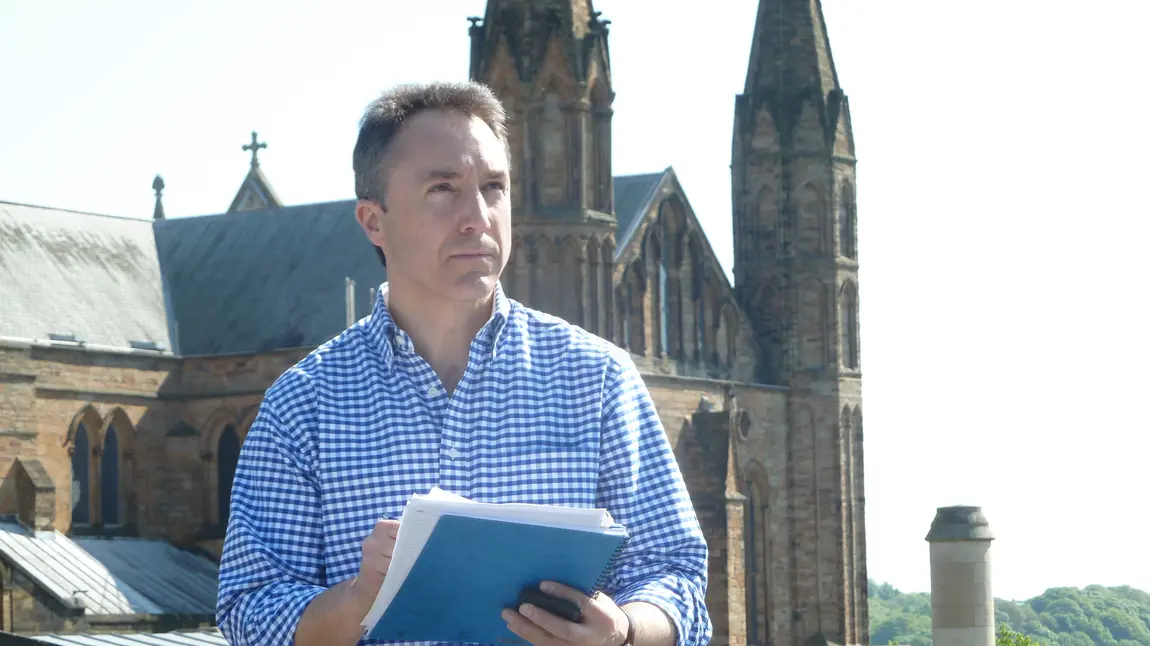The built environment: planning for development and change

Vulnerable historic structures
Despite the impression of solidity and resistance to the passage of time that we have of so many of our historic buildings, both the buildings and the collections that they house are in reality inherently vulnerable.
Some of the risks to the fabric are visible, such as mechanical damage caused by thousands of visitors walking up a staircase that was originally designed for a family and its servants, or bags and rucksacks scraping against medieval carving in a cathedral cloister.
"Both the buildings and the collections that they house are in reality inherently vulnerable."
But other risks are less apparent and are often counterintuitive.
The warmth provided by a new heating system designed to make people comfortable can cause wooden panelling to crack, paintings to flake and damp stone to crumble. Water vapour from a new kitchenette can cause mould to grow on historic books and manuscripts or encourage condensation on stained glass or lead roofs causing them to deteriorate.
The risks posed by these environmental factors, although less dramatic than sudden mechanical damage, are equally serious and irreversible. What is more, the mechanical damage can often become quite advanced before the risk is identified and controlled because it can develop unseen.
Modern demands
In the 21st century, we often require our historic buildings to act in a way for which they were not designed. So, we may want our small rural churches and chapels to be as warm as our houses for a few hours on a Sunday or we may want a medieval barn, which was built to store produce and livestock, to provide a comfortable setting for community events or school plays. In many of our cathedrals, we aspire to install sophisticated modern museums in sensitive vulnerable spaces which are visited by thousands of visitors.
The drive to make our historic buildings more accessible to a wider audience is a positive one but the implications for conservation are more complicated, particularly with issues such as the associated changes in the building’s environment, which are among the least well understood and recognised.
"In the 21st century, we often require our historic buildings to act in a way for which they were not designed."
However, most of the risks are predictable and, if they are taken into account early in the development of a project, they can be controlled or mitigated with little or no effect on the project itself.
With this in mind HLF developed guidance on environmental performance with the aim of providing applicants with a basic understanding of the issues involved, how they might assess whether their project will be affected and, if so, how they can go about controlling the issues.
Understanding and controlling risk
The current drive to make our historic buildings more energy efficient and sustainable is certainly something that should be encouraged, but it is worth knowing that many historic buildings are already fairly energy efficient if they are used as originally intended. However, when we try to introduce modern methods to improve the efficiency of historic structures there are potential complications and risks.
Unless we understand the building’s environmental performance properly, the best scenario will be that the changes will not be as effective as they could be, while the worst is that the changes may cause costly and irreversible damage. Indeed, many well-intentioned interventions that have taken place in the past have since caused damage, which is now being repaired.
"The new building environment and performance guidance is one of a number of tools that has been developed by HLF to help projects..."
The new building environment and performance guidance is one of a number of tools that has been developed by HLF to help ensure that projects are successful in encouraging the use and reuse of buildings but, at the same time, providing protection to the very buildings and collections that we are trying to save.
The good practice guidance is intended as a practical tool with the expectation that, in many cases, applicants can carry out the assessment and make the decisions themselves, possibly in consultation with their professional team.
However, it also identifies the types of issues that are more complicated and where further professional help might be required. It provides a template for the questions that applicants should discuss with their professional team, as well as helping them use the results in developing a more effective project that protects the historic building while at the same time allowing the necessary changes to go ahead.
Heritage projects are often located in historic buildings rather than in newly designed structures partly because people want to find new uses for our stock of valuable old buildings in order to secure their future. However, to ensure their survival, we need to understand how they work and how our 21st century requirements will impact on them, not just over the next five years but over the next 500. We hope that this guidance will help applicants to achieve this.